Regional Variations in Growing Kratom
Kratom, or Mitragyna speciosa, is a tropical tree with leaves rich in unique alkaloids like mitragynine and 7-hydroxymitragynine. These alkaloids vary significantly by region, creating diverse kratom strains.
Southeast Asia
Thailand’s tropical climate and rich soil produce kratom strains high in mitragynine. Thai strains are categorized as red, green, or white, indicate leaf maturity and potential effects.
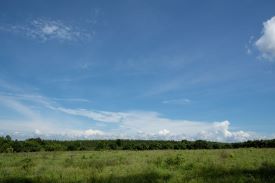
Borneo, shared by Indonesia and Malaysia, is another major kratom-growing area. Borneo strains, commonly is renowned for their high 7-hydroxymitragynine content.
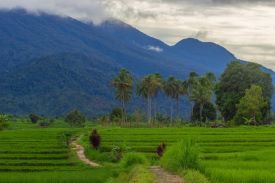
Malaysian kratom, or Malay, offers a balanced profile between stimulating and sedative effects. The region’s climate contributes to the unique alkaloid content, sought for its mood-enhancing properties.
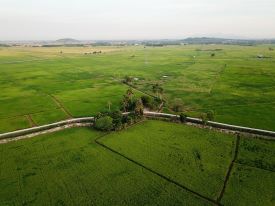
Indonesia’s varying climates and soils produce a wide range of kratom varieties. Regions like Riau and Hulu Kapuas yield strains with distinct characteristics, from energizing to euphoric and relaxing effects.

Kratom Cultivation and Processing
Kratom has been used in herbal medicine for centuries in Southeast Asia. Thailand, Malaysia, Indonesia, the Bali Islands, and nearby areas like Myanmar and Papua New Guinea cultivate kratom. These regions’ growth, harvesting, and processing techniques define the unique attributes of the kratom strains produced.
Factors Affecting Growth
Several factors, including climate, soil type, and farming practices, influence the growth and alkaloid content of kratom leaves. Different kratom strains from various regions offer a spectrum of effects and potency levels, interesting growers and users alike.
Importance of Post-Harvest Processing
Post-harvest processing of kratom is as crucial as cultivation. Drying and pulverizing methods can significantly alter the alkaloid profile of the final product. These meticulous techniques contribute to the diversity of available kratom supplements, each with distinct uses in herbal medicine.
Historical and Botanical Background
Exploring the origins, characteristics, and cultural footprint of Kratom reveals a rich tapestry spanning thousands of years. This section unpacks the traditional roots and botanical profile of this intriguing plant, and highlights its cultural impact across Southeast Asia.
Botanical Characteristics
The tropical kratom tree, reaching between 40 to 100 feet in height, in the wild. However when cultivated outside of its natural environment an average height is around 20 feet. Regardless of growing region all kratom trees have glossy, green leaves containing the active compounds. The leaves show various vein colors—red, green, white, and yellow—each indicating different effects and chemical compositions.
Cultural Significance
Globalization has elevated kratom’s cultural significance from a local enhancer to a substance of interest in Western countries. This journey illustrates the interface between traditional botanical knowledge and modern application.
Factors Affecting Growth
Several factors, including climate, soil type, and farming practices, influence the growth and alkaloid content of kratom leaves. Different kratom strains from various regions offer a spectrum of effects and potency levels, interesting growers and users alike.
Growing Conditions and Climate

Kratom thrives in tropical climates where warmth and humidity are consistent year-round. The optimal conditions for growth include:
- Temperature: Averages between 70°F to 90°F
- Humidity: High humidity, often approaching 100%.
- Sunlight: Bright, indirect light.
- Rainfall: Frequent, as kratom plants need moist, well-drained soil.
Soil and Nutrients Requirements
The soil quality is pivotal for the health of growing kratom trees with preferences leaning towards specific characteristics such as:
- Soil pH: Slightly acidic to neutral, ranging from 5.5 to 6.5.
- Nutrients: Rich in nitrogen, magnesium, and certain minerals.
- Fertilizer: Use of organic fertilizers recommended. These can consist of compost or manure to enrich the soil.
Kratom Cultivation Techniques
Kratom can be grown from seeds or cuttings, with each method having its own set of challenges:
From Seeds:
- Viability: Seeds must be fresh due to their short viability period.
- Germination: Requires warmth and a humid environment for successful germination.
- From Cuttings:
- Rooting: Takes time, but can be more successful than seeds in non-native regions.
Additionally, cultivation can happen in multiple settings:
- Greenhouse: Offers temperature and humidity control, enabling growth outside native regions.
- Indoors vs Outdoors: Indoors allows for year-round cultivation but requires space and light; outdoors requires a tropical or sub-tropical climate.
Growth in Non-Traditional Areas
United States
States like Florida, Virginia, and Washington have started cultivating kratom. Although not native, these regions endeavor to create optimal conditions for growing kratom, focusing on temperature and humidity control.
Europe
Similarly, Europe has shown interest in kratom cultivation. Due to the less-than-ideal climate, growers in Europe typically grow kratom indoors to effectively manage conditions.
Proper Harvesting Techniques
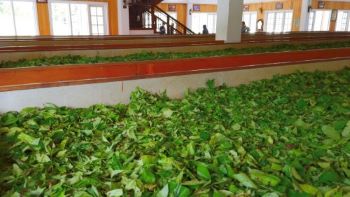
Leaf Maturity
Harvesting kratom at the right time is critical for optimum alkaloid content. The ideal harvest time varies between strains, as each has its maturity indicators, such as leaf size and color. Mature leaves contain higher alkaloid levels, contributing to the strain’s distinct characteristics.
Pest and Disease Management
Farmers use sustainable methods to protect kratom plants from pests and diseases. The selective use of pesticides is essential to maintain the leaves’ integrity and prevent contamination.
Drying
Post-harvest, the drying process is pivotal. It preserves the leaves and affects the alkaloid profile, influencing the color and potency of the kratom.
Sunlight Exposure
Some strains are dried indoors to prevent direct sunlight from altering their chemical composition. Others may be sun-dried for varying durations to achieve different results.
Preservation Methods
After drying, the leaves are either sold whole or ground into powder. Proper preservation methods during grinding and storage are crucial to prevent degradation from light exposure, moisture, and oxygen.
Ensuring Quality and Desired Effects
By adhering to these specific harvesting and post-harvest practices, farmers influence the strain’s properties. This ensures that kratom retains its desired effects and quality when it reaches consumers.
Kratom Strains and Effects
Different kratom strains produce varying effects. Their region of origin, vein color, and chemical composition influence these effects. Let’s explore these differences to understand how they affect an individual’s experience.
Vein Color Classification
Different kratom strains produce varying effects. Their region of origin, vein color, and chemical composition influence these effects. Let’s explore these differences to understand how they affect an individual’s experience.
Kratom leaves are distinguished by the color of their veins—red, green, white, or yellow. Each color signifies a different maturity stage and alkaloid composition, contributing to the effects experienced.
Red Vein Kratom: Known for its higher 7-hydroxymitragynine levels, red strains typically yield soothing properties.
Green Vein Kratom: Green strains strike a balance between red and white, providing a moderate effect that encompasses both a boost and relaxation.
White Vein Kratom: Lower in 7-hydroxymitragynine but rich in mitragynine, white strains are often associated with increased energy.
Yellow Vein Kratom: Yellow or “Golden” kratom is less common, and its effects can vary but are often described as falling somewhere between the effects of green and red strains.
Kratom Alkaloid Profiles and Potency
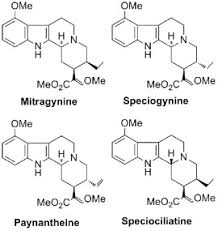
Primary Alkaloids in Kratom
The primary alkaloids found in kratom are mitragynine and 7-hydroxymitragynine. These alkaloids interact with opioid receptors in the brain and can produce both stimulant and sedative effects.
- Mitragynine: Primarily a stimulant, it’s more abundant in white and green strains.
- 7-Hydroxymitragynine: Known for its tranquil effects more prevalent in Red strains
- Paynanthein: The second most abundant alkaloid which is thought to effect tension.
- Speciogynine: A significant alkaloid in kratom, contributing to promoting relaxation.
- Corynoxine: Thought to possible contribute to improved mood and cognitive function.
- Speciociliatine: Is believed to be a major contributor to the overall relieving effects in kratom.
Key Takeaways
- Kratom is a traditional herbal supplement native to Southeast Asia, and its characteristics vary by region.
- Environmental factors such as climate and soil, alongside cultivation techniques, influence kratom’s alkaloid content.
- How kratom is harvested play a significant role in determining the properties and effects of different kratom strains.
Legal Status and Market Availability
When exploring the world of kratom, you will discover varying landscapes of legality and market access. Understand how regulations affect the availability and quality of kratom, especially if you’re looking to purchase.
Regulation and Control
In the United States, kratom’s legal status is a patchwork of state-specific regulations. While kratom is legal in most states, each one may have different rules regarding its sale and use. For example, Arizona, Nevada, Oklahoma, Oregon, and Montana allow the sale, possession, and use of kratom without restrictions.
- Banned States: A handful of states have placed an outright ban on kratom, which means consumers there cannot legally purchase or possess the plant.
- States with Regulations: Some states have adopted the Kratom Consumer Protection Act, which mandates certain standards for kratom to ensure safety and proper labeling.
Purchasing Quality Kratom
The availability of different kratom strains, such as Bali, Maeng Da, and Kalimantan, depends on the legal status of the region. High-quality kratom is more accessible in markets where it is legal and regulated.
Market Availability
In regions with fewer restrictions, consumers often have access to a wide range of kratom products.
Quality Measures
To purchase quality kratom, seek reputable sellers who comply with local regulations and whose products meet safety standards.
Frequently Asked Questions
When exploring the world of kratom, it’s important to understand how different regions impact the plant’s characteristics. These FAQs dive into what makes each region unique in terms of climate, soil, and cultivation practices, and how these factors influence kratom’s effects and alkaloid profiles.
What are the differences in kratom effects based on its region of growth?
The conditions in which kratom is grown can affect its potency and the types of effects it may produce. For example, kratom from Malaysia may have different alkaloid levels compared to kratom grown in Indonesia, leading to varying experiences for the user.
How does the climate influence the potency of kratom from various regions?
The climate, with its temperature and rainfall patterns, critically influences kratom’s alkaloid content. Warm, humid regions typically foster leaves with higher potency, while variations in dry and wet seasons can cause fluctuations in alkaloid concentrations.
What distinguishes the cultivation practices of kratom in different areas?
In regions like Indonesia, traditional farming practices maintain natural biodiversity, which can contribute to the plant’s alkaloid profile. Contrastingly, in areas where kratom is cultivated more intensively, farming techniques may emphasize high yield over alkaloid richness.
How do regional soil types impact the alkaloid content in kratom?
Soil composition varies by region and can directly affect the alkaloid content in kratom leaves. Rich, volcanic soil might boost the alkaloid production, while poorer soils may result in a different alkaloid spectrum within the plant.
Can the geography of a region affect the types of kratom strains that can be grown there?
Indeed, geography can shape which kratom strains thrive in an area. The altitude, slope of the land, and local flora can all influence which plant varieties can grow successfully and how their properties develop.
What are the similarities and differences between Indo and Bali kratom strains?
Indo and Bali strains, while geographically close, exhibit distinct traits due to differences in their regional environments. Bali strains are known for their relaxing properties. In contrast, Indo strains often provide a balance of effects due to a diverse alkaloid profile influenced by the Indonesian archipelago’s complex climate.
Disclaimer: The information provided in this article is for educational purposes only and does not constitute medical advice. Kratom is not intended to diagnose, treat, cure, or prevent any disease. Always consult with a healthcare professional before using any new supplement or substance. The legal status of Kratom varies, so please check local laws before purchasing or using it.


